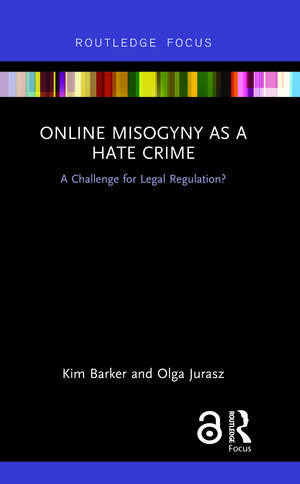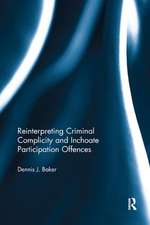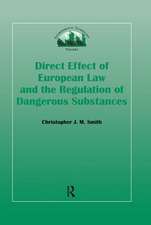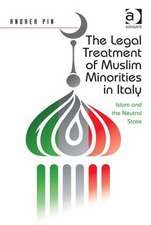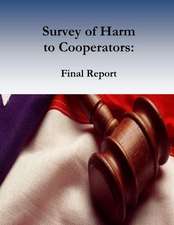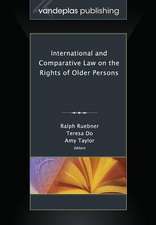Online Misogyny as Hate Crime: A Challenge for Legal Regulation?
Autor Kim Barker, Olga Juraszen Limba Engleză Hardback – 11 dec 2018
| Toate formatele și edițiile | Preț | Express |
|---|---|---|
| Paperback (1) | 167.69 lei 6-8 săpt. | |
| Taylor & Francis – 13 dec 2021 | 167.69 lei 6-8 săpt. | |
| Hardback (1) | 427.16 lei 6-8 săpt. | |
| Taylor & Francis – 11 dec 2018 | 427.16 lei 6-8 săpt. |
Preț: 427.16 lei
Preț vechi: 502.54 lei
-15% Nou
Puncte Express: 641
Preț estimativ în valută:
81.73€ • 85.34$ • 67.65£
81.73€ • 85.34$ • 67.65£
Carte tipărită la comandă
Livrare economică 04-18 aprilie
Preluare comenzi: 021 569.72.76
Specificații
ISBN-13: 9781138590373
ISBN-10: 1138590371
Pagini: 146
Dimensiuni: 138 x 216 x 10 mm
Greutate: 0.45 kg
Ediția:1
Editura: Taylor & Francis
Colecția Routledge
Locul publicării:Oxford, United Kingdom
ISBN-10: 1138590371
Pagini: 146
Dimensiuni: 138 x 216 x 10 mm
Greutate: 0.45 kg
Ediția:1
Editura: Taylor & Francis
Colecția Routledge
Locul publicării:Oxford, United Kingdom
Public țintă
Postgraduate and UndergraduateCuprins
Table of Contents
Acknowledgments
Terminology
Chapter 1 – Online Misogyny: Law and the Digital Feminist
2.1. Introduction – An open, participatory ideal?
2.2. Social Media Abuse as a Modern Phenomenon
2.3. From Offline to Online: the digital misogyny ‘switch’
2.3.1. The Normalisation of Online Abuse
2.3.2. Political Campaigning & The ‘Techlash’
2.3.3. Intersectional Abuse – Still Misogyny, Still a Techlash?
2.4. Conclusion
Chapter 3 – Online Communications: The Legal Landscape
3.1. Introduction – Comprehension, Competence, and Cohesion?
3.2. The Limitation Paradox
3.2.1. The Devolution Settlement
3.2.2. The European Union Remit
3.2.3. Limitations – Competence v Cohesion?
3.3. Legal Challenges of Online Communications – Where Does the Problem Lie?
Part I – Threats & Threats to Kill
3.4. Threats & Threats to Kill
Part II – Stalking & Harassment
3.5. Stalking
3.6. Harassment
Part III – Communications
3.7. Communications Networks
3.8. Conclusions
Chapter 4 – Hate Crime: The Limits of the Law
4.1. Introduction
4.2. Hate crime: development and classifications
4.2.1. Defining hate crime
4.2.2. Hate crime v Hate speech
4.2.3. Hate speech and human rights
4.2.4. Hate crime: the current legal framework in England & Wales
4.2.5. Who is protected against hate crime?
4.3. Extending the boundaries of hate crime: hate (re)defined
4.3.1. Why the need to include gender in hate crime laws
4.3.2. Gender as a protected characteristic: towards law reform
4.4. Online hate (crimes)
4.4.1. Does online make it different?
4.5. Online misogyny as a hate crime
4.6. Conclusions
Chapter 5 - #OVAW, The Internet & Hate: Unfinished (Legal) Business
5.1. The realities of everyday, gender-based hate
5.2. Online misogyny: not a legislative priority
5.3. Implications for legal response and regulation
5.4. Final Thought
Index
Acknowledgments
Terminology
Chapter 1 – Online Misogyny: Law and the Digital Feminist
- Introduction – Why this book and why now
- What this book is (not) about
- Addressing online misogyny through law: the limitations
- Jurisdiction
- Platform Regulation
- Feminism, law and the fight against (online) misogyny
- The rise of the digital feminist
2.1. Introduction – An open, participatory ideal?
2.2. Social Media Abuse as a Modern Phenomenon
2.3. From Offline to Online: the digital misogyny ‘switch’
2.3.1. The Normalisation of Online Abuse
2.3.2. Political Campaigning & The ‘Techlash’
2.3.3. Intersectional Abuse – Still Misogyny, Still a Techlash?
2.4. Conclusion
Chapter 3 – Online Communications: The Legal Landscape
3.1. Introduction – Comprehension, Competence, and Cohesion?
3.2. The Limitation Paradox
3.2.1. The Devolution Settlement
3.2.2. The European Union Remit
3.2.3. Limitations – Competence v Cohesion?
3.3. Legal Challenges of Online Communications – Where Does the Problem Lie?
Part I – Threats & Threats to Kill
3.4. Threats & Threats to Kill
Part II – Stalking & Harassment
3.5. Stalking
3.6. Harassment
Part III – Communications
3.7. Communications Networks
3.8. Conclusions
Chapter 4 – Hate Crime: The Limits of the Law
4.1. Introduction
4.2. Hate crime: development and classifications
4.2.1. Defining hate crime
4.2.2. Hate crime v Hate speech
4.2.3. Hate speech and human rights
4.2.4. Hate crime: the current legal framework in England & Wales
4.2.5. Who is protected against hate crime?
4.3. Extending the boundaries of hate crime: hate (re)defined
4.3.1. Why the need to include gender in hate crime laws
4.3.2. Gender as a protected characteristic: towards law reform
4.4. Online hate (crimes)
4.4.1. Does online make it different?
4.5. Online misogyny as a hate crime
4.6. Conclusions
Chapter 5 - #OVAW, The Internet & Hate: Unfinished (Legal) Business
5.1. The realities of everyday, gender-based hate
5.2. Online misogyny: not a legislative priority
5.3. Implications for legal response and regulation
5.4. Final Thought
Index
Notă biografică
Dr Kim Barker is Lecturer in Law at Stirling University.
Dr Olga Jurasz is Senior Lecturer in Law at The Open University.
Dr Olga Jurasz is Senior Lecturer in Law at The Open University.
Descriere
The ideal of an inclusive and participatory Internet has been undermined by the rise of misogynistic abuse on social media platforms. However, limited progress has been made at national – and to an extent European – levels in addressing this issue.
